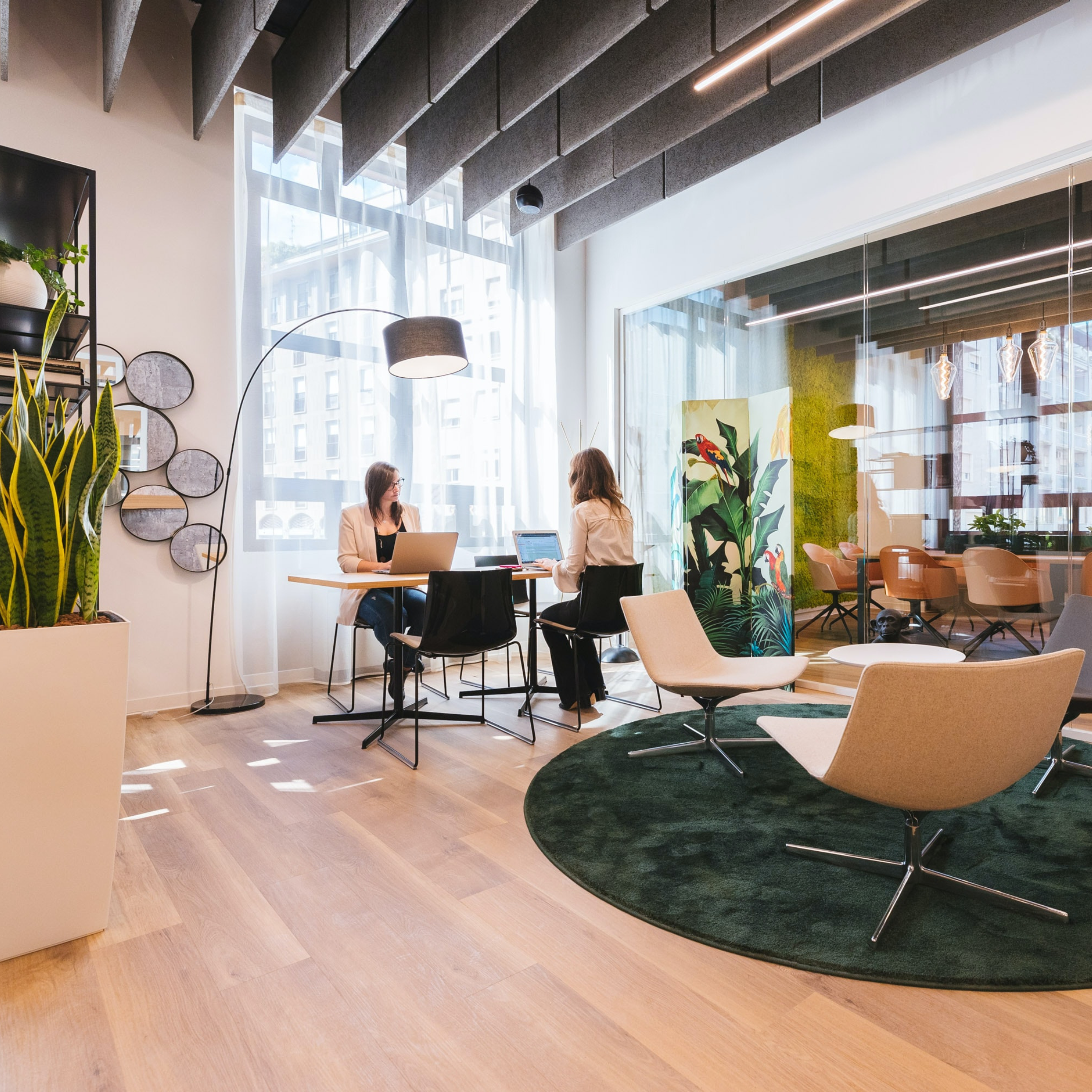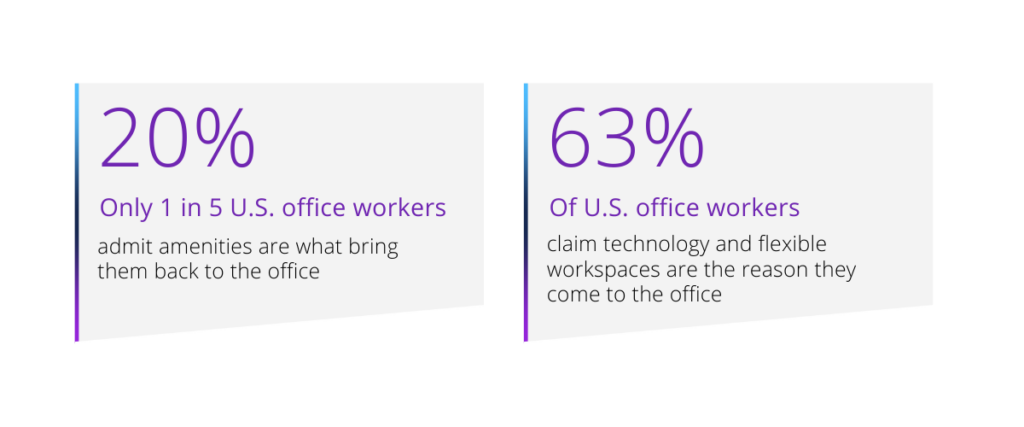Technology - the invisible amenity

Over the last 13 quarters, vacancy rates have increased in the US, hitting a record high of 18.6% in the first quarter of 2023, Cushman & Wakefield report in their newly published U.S. Office Marketbeat Reports. This increase in vacant office space has been driven by hybrid working models which has been a factor in the growth of subleasing, showing that companies no longer need as much space.
This continued rise in vacancy rates has put pressure on landlords and operators to remain relevant and deliver compelling propositions to attract people back to the office. One of the key factors in enticing occupiers back is by having amenity rich buildings.
When we think of amenities, sitting down for a coffee or utilising a workout space comes to mind. However, it is not just the physical amenities that occupiers want, but the invisible ones too – technology.
In our recent occupier sentiment research that surveyed 1,000 U.S. office workers only 1 in 5 office workers admitted that amenities are what bring them back to the office but 63% (more than 3 in 5) of office workers claim that technology and flexible workspaces are the reason they come to the office. This validates technology as a leading amenity and those who implement a tech-forward strategy will ultimately deliver a more successful workplace.
The invisible amenity: technology
When breaking down the amenities that occupiers want, it is evident that many of them are powered by technology.
For example, activation. People come to the office to socialise and collaborate with colleagues which are activities that are enhanced by technology whether that is having connectivity in communal spaces or discovering and attending events that are often promoted via a tenant engagement app.
Even when considering conveniences, tech plays a role in enabling occupiers to have instant access to food and beverages through tech-friendly micromarkets.
Amenities are not only powered by technology, but technology itself is more often being considered one. Occupiers want their workplace to have a better digital infrastructure so that they can be more productive. It is vital that people can be more efficient in the office rather than at home to give them an incentive to go to the office. This is evident where our findings show that 69% of workers said that technologies would entice them to come into the building.
What occupiers want
The findings of the report also indicate that there is a divide between what occupiers want versus what their workplace provides. 81% of office workers state that they are frustrated with their current office experience.
Technology plays a vital part in the occupier’s whole office experience whether that is getting up and running in a new workspace, seamlessly utilising different spaces in a building, or benefitting from collaboration. This requires not just having technology, but having the right technology that will meet occupiers needs, and create a consistent and frictionless customer journey throughout their entire lifecycle in a space.
However, considering there is a flight to quality, many offices are not currently offering technology that improves the experience of their occupiers. A staggering 85% of today’s office workers report that their office doesn’t provide prolific tech from room booking to sensor lights. It is evident that there is still plenty of room for improvement before prioritising whether to have a barista.
Are physical amenities worth the cost?
Physical amenities come with a heavy cost, which is especially true for an older building that needs to be re-outfitted to accommodate the new amenities. Therefore, it is important for landlords and operators to not simply focus on the physical amenity arms race but listen to what occupiers want otherwise they will not be able to tackle the vacancy rate challenge.
Offering leading in-office technology can be a differentiator and help to create the desired, seamless journey that occupiers of the workspace are after. Being able to deliver this type of experience to tenants can truly set landlords and operators apart from their competitors.
Embracing flexibility and working towards implementing a digital first strategy is paramount. Otherwise, there will be even tougher roads ahead in the fight to remain competitive and relevant.

Featured
Introducing Intelligence Engine 🎉 Powering meaningful space utilisation & digital experience insights
Intelligence Engine capabilities propels us into a new era of workspace management, bringing meaningful Space Utilisation and Digital Experience insights to essensys Platform.
Read the article
Featured
Future of flex in Europe: attracting and retaining enterprise customers
Gaël Montassier, Co-founder of Startway, shares his insights on the future of flexible workspace in Europe.
Read the article
